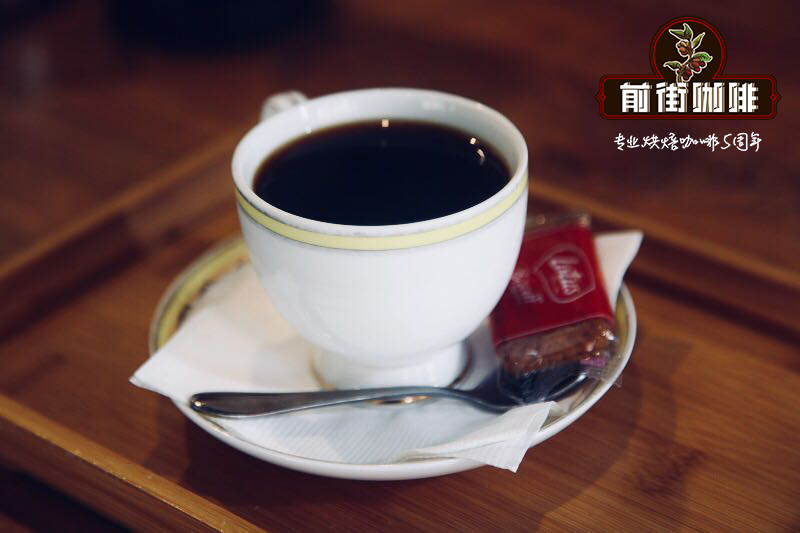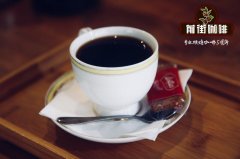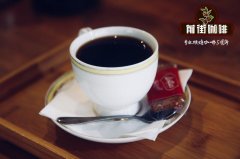Is Blue Mountain Coffee really the best in the world? How much is the authentic Blue Mountain coffee?

For information, please pay attention to Cafe Workshop (Weixin Official Accounts cafe_style)
Blue Mountain coffee is coffee brewed from coffee beans from the Blue Mountains of Jamaica. Among them, according to grades, it is divided into Jamaica Blue Mountain Coffee and Jamaica Alpine Coffee. The Blue Mountains are located in the eastern part of Jamaica Island. They are named because they are surrounded by the Caribbean Sea. Whenever the weather is clear, the sun shines directly on the blue sea, and the peaks reflect the bright blue light of the sea. Blue Mountain peak elevation of 2256 meters, is the highest peak in the Caribbean, is also a famous tourist attraction. It is located in the earthquake zone, has fertile volcanic soil, fresh air, no pollution, humid climate, foggy and rainy all year round,(average precipitation is 1980 mm, temperature is about 27 degrees) such climate has created the world-famous Jamaica Blue Mountain Coffee, but also created the world's second highest price coffee. This kind of coffee has all the characteristics of good coffee, not only the taste is rich and mellow, but also because the sweet, sour and bitter flavors of coffee are perfectly matched, so there is no bitterness at all, only moderate and perfect sourness. Blue Mountain coffee accounts for only 25 percent of Jamaica's total production
I. From 2000 to 2006, the annual output of Jamaica coffee was between 1260-2400 tons, and Blue Mountain coffee accounted for about 25% of the total output, that is, the annual output of authentic Blue Mountain was about 300 tons to 600 tons, 90% of which was contracted by Japanese. It was not expensive or difficult!
II. Jamaica has a small land area and low coffee production, but frequent natural disasters and insect disasters make it worse. Jamaica had a bad year around 2007, when storms and insects repeatedly hit the island nation and the noble Blue Mountain coffee was severely damaged.
From the second half of 2007 to 2008, new coffee beans in Blue Mountain barrels were riddled with worm-eaten beans, even expensive Blue Mountain No.1. According to records, the coffee management bureau issued to coffee farmers insect trap effect is mediocre, farmers do not want to use high, only to create a new crop pest crisis. The drill fruit bug is a disaster for coffee gardens around the world. Kenya is also suffering, and its output has dropped sharply.
The Blue Mountains are often shrouded in fog, and the sun seems to coat them with a blue mist, and the Caribbean Sea surrounds them, hence the name. Heavy fog helps cool afternoon temperatures, which is good for coffee growth. Between 1800 and 1838, Jamaica produced more than 70,000 tons of coffee a year, making it one of the largest coffee producers at the time. However, in the 1840s, Britain abolished slavery, slaves regained their freedom, production costs increased greatly, and coffee market competition from Latin American neighbors began to decline in Jamaica.
Until 1891, the coffee cultivation industry faced many difficulties. Although the government came to teach coffee farmers to adopt correct cultivation methods, the decline was irreversible. At that time, the largest buyer of Blue Mountain Coffee was Canada, and because the quality of Jamaica coffee declined year after year, Canada began to refuse to order Jamaica Blue Mountain Coffee.
Important Notice :
前街咖啡 FrontStreet Coffee has moved to new addredd:
FrontStreet Coffee Address: 315,Donghua East Road,GuangZhou
Tel:020 38364473
- Prev

Is Burmese coffee only instant? What brand of Burmese coffee beans is good for Burmese coffee beans?
For information, please pay attention to the coffee workshop (Wechat official account cafe_style) Myanmar is located in the west of Southeast Asia, with a land area of more than 670000 square kilometers, is the largest country in the China-India Peninsula. Among the ten ASEAN countries, it is second only to Indonesia. Myanmar is the only country in the world with the two most populous countries, that is, India and China, and it is also China's land access to the Indian Ocean.
- Next

How much do you know about old coffee? What's the difference between old manning and old Java?
For information, please follow the coffee workshop (Wechat official account cafe_style) old coffee. Maybe you have heard that it doesn't matter if the coffee bean has been kept for a long time, it will become old coffee and taste better. In fact, this is a rather irresponsible saying that beans will rot after they have been kept for a long time, changing from fresh cyan to white, then to yellow, becoming dull and even worms. Like
Related
- Does Rose Summer choose Blue, Green or Red? Detailed explanation of Rose Summer Coffee plots and Classification in Panamanian Jade Manor
- What is the difference between the origin, producing area, processing plant, cooperative and manor of coffee beans?
- How fine does the espresso powder fit? how to grind the espresso?
- Sca coffee roasting degree color card coffee roasting degree 8 roasting color values what do you mean?
- The practice of lattes: how to make lattes at home
- Introduction to Indonesian Fine Coffee beans-- Java Coffee producing area of Indonesian Arabica Coffee
- How much will the flavor of light and medium roasted rose summer be expressed? What baking level is rose summer suitable for?
- Introduction to the characteristics of washing, sun-drying or wet-planing coffee commonly used in Mantenin, Indonesia
- Price characteristics of Arabica Coffee Bean Starbucks introduction to Manning Coffee Bean Taste producing area Variety Manor
- What is the authentic Yega flavor? What are the flavor characteristics of the really excellent Yejasuffi coffee beans?

